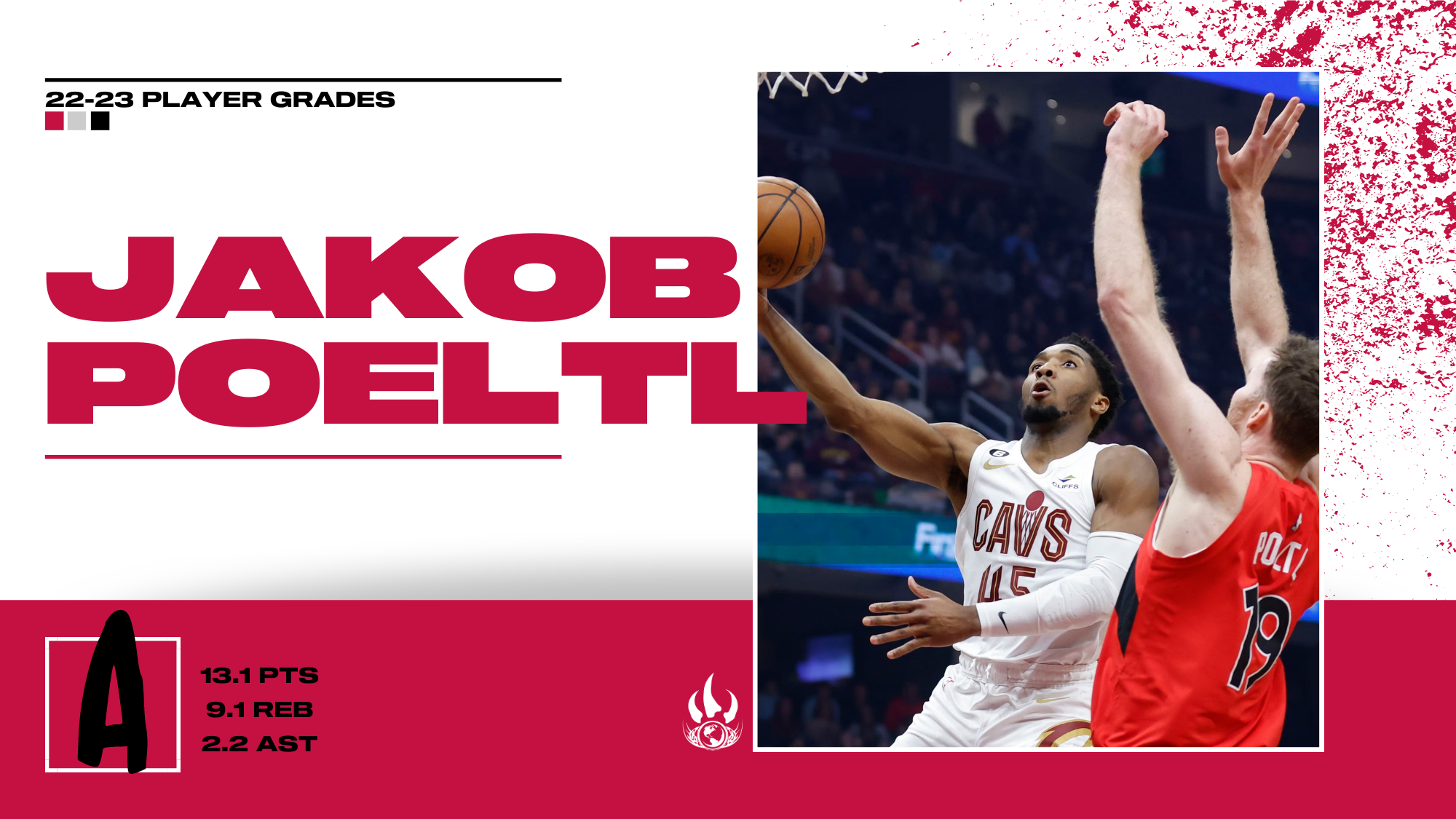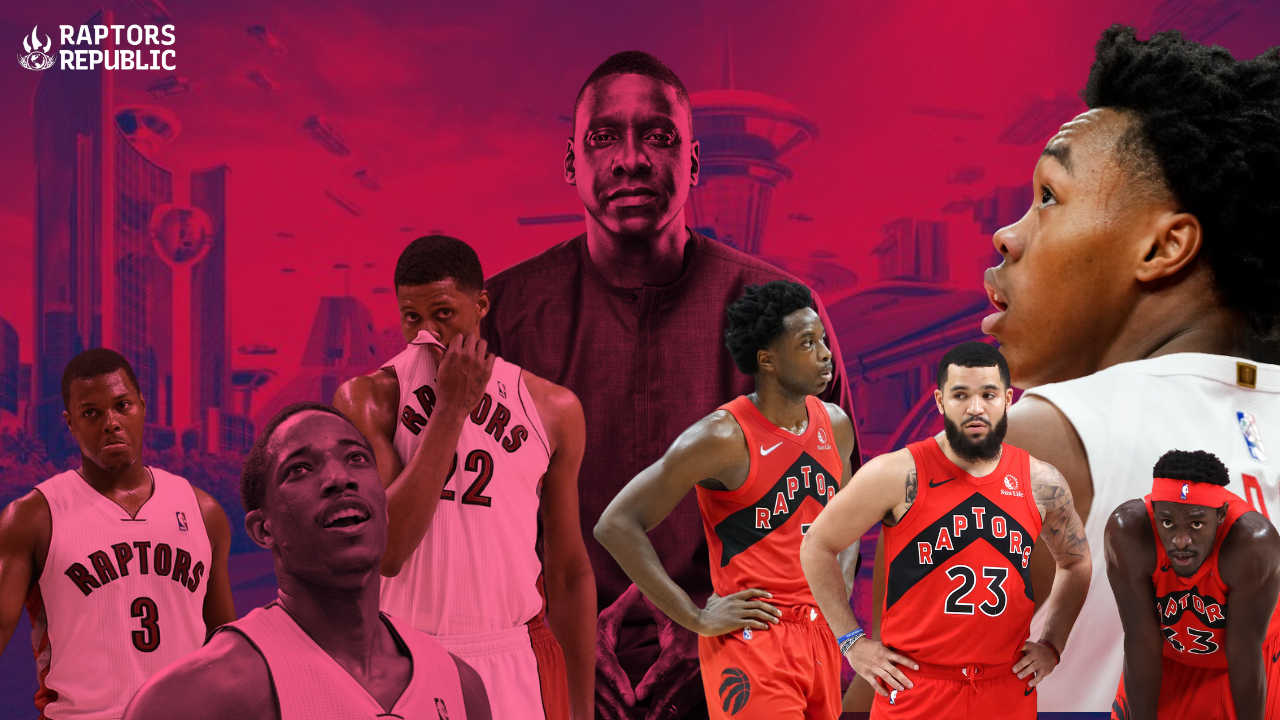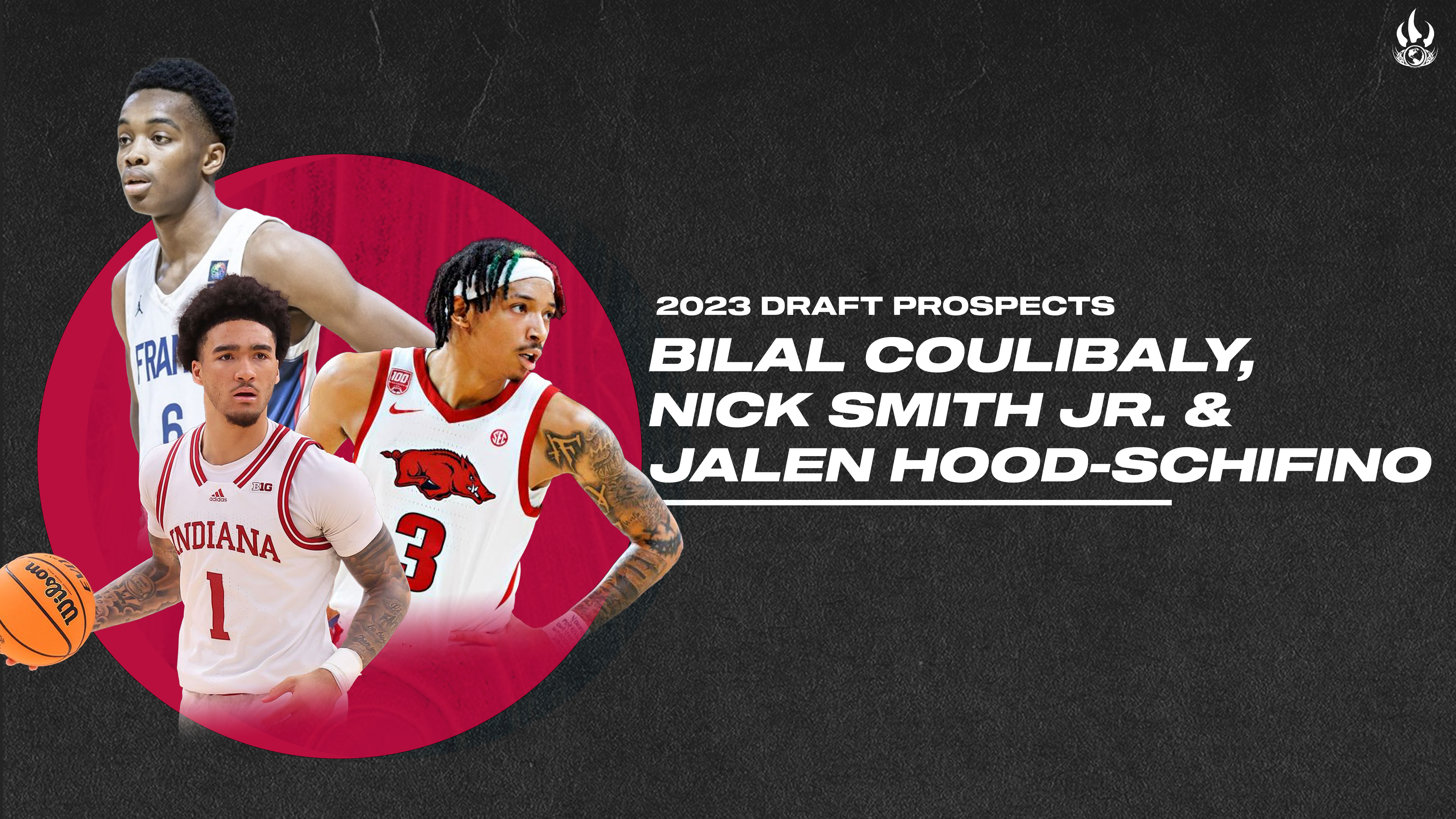The following is part of Raptors Republic’s series of pieces reviewing the season for the Toronto Raptors. You can find all the pieces in the series here.
Most people don’t think about air as they breathe it. You can go hours, days — your whole life, if you care to — without consciously taking in oxygen. Your body takes care of that all on its own. Some things are a given in this life. There used to be more, but until Nestle figures out a way to sell us our oxygen, those of us with healthy lungs and respiratory systems get that just as a perk for being born.
The NBA has its qualities that come with the price of admission, too. Structures that teams don’t have to build, but simply come as a matter of course. As a result of entropy and path dependency.
That is, until the Toronto Raptors lost Marc Gasol and Serge Ibaka and went haywire in philosophizing about how to construct a roster.
In 2019, the Raptors won a championship with one of the best defensive players in the league and one of the best bench players both sharing the same position. In 2020, they lost Kawhi Leonard but remained one of the best teams behind the same strengths. Then in 2021, they tried to replace Gasol and Ibaka with Aron Baynes and Alex Len. It didn’t work. Khem Birch, a free-agent castaway from Orlando, held the spot admirably for a time, but injuries sapped his explosiveness. So in 2022 and most of 2023, the Raptors said fuck it and just held their breath. They started three forwards in Pascal Siakam, Scottie Barnes, and O.G. Anunoby, and they shared center duties.
All this to say: Teams in the NBA just have centers. Like breathing, they don’t need to think about it — it just happens. The Raptors went more than a full season without breathing. And when oxygen finally hit their lungs in the form of one Jakob Poeltl, the air never tasted so sweet.
Over a beefy 1463 minutes when Siakam, Anunoby, and Barnes sharing the court (without Poeltl), Toronto had a net rating of 1.8. That’s … fine. It’s not so great for a team that was trying to make the playoffs and had very solid top-end talent. Toronto handicapped itself without a player who could set screens, mash the glass, finish plays efficiently (especially that), and do it all while using a low share of possessions.
That’s exactly what Poeltl brought to Toronto when he came to town. Toronto had a giant, 7-foot-sized hole on its roster. Poeltl filled it. Sometimes, it’s that simple.
Of course, he did so in many admirable ways. He made quick decisions, which should be a premium under new coach Darko Rajakovic. His passing was exceptional for a center, and he was fantastic in the short-roll space, especially. He was one of 32 players with at least 50 short-roll screens after the trade deadline, according to Second Spectrum, and among those players he was eighth in efficiency, with Toronto scoring 1.08 points per chance on such plays. Poeltl slung lay-downs to cutters in the paint, whirred passes to shooters, or kept the ball to finish himself.
Poeltl is a unique finisher around the league, and his surprising footwork allowed him to shoot 74 percent around the rim, the best among rotation Raptors. He didn’t cram dunks over defenders’ heads (except for that one time in transition), but he mostly used tact and tactics to give Toronto its highest-efficiency option in the half-court. He also led Toronto in efficiency from the short mid-range, at 55 percent. He gave Toronto what it lacked, both in terms of role but also in discrete skills.
With Poeltl acting as an offensive engine as a screener, finisher, and passer, Siakam’s usage dropped, and he was able to pick his spots a little better. Barnes turned into more of a cutter. Anunoby’s shooting leaped off the page.
As a result of the roster making sense, Toronto stopped bleeding points from the corners and was able to protect the paint without sacrificing its defensive integrity. Its pick-and-roll defense suddenly became immaculate. Poeltl protected the rim admirably — and the Raptors continued to force turnovers, but without giving up easy points in order to make it happen.
In the big picture, things almost immediately improved. The team’s net rating jumped from 0.7 to 3.0. It turns out life isn’t so hard when you allow yourself to breathe!
And yet, it’s easy to question whether the move made sense. Toronto’s improving came at a huge cost — the team now has the 13th pick in this upcoming draft, and it could easily have had a top-10 pick had it simply held its breath for the remainder of the season. That the Raptors still failed to make the playoffs — in perhaps the most humiliating way imaginable — makes that cost all the more painful. And on top of hurting their own draft pick this year, Toronto will likely lose its first-round draft pick next year as well, unless the team manages to have one of the worst six records in the league. (Which seems unlikely barring huge changes this offseason.) Oh, and, to top it all off, Poeltl is a free agent currently, which means Toronto is not guaranteed to keep him on its roster going forward.
So Toronto remembered how to breathe. It did that at the cost of cutting off one of its hands. That’s the price, I suppose, when you go more than a full season without addressing a clear need. It becomes very expensive to do it when you finally get around to fixing the problem.
In the pros column, Toronto now has bird rights for an excellent center. That doesn’t mean it will retain Poeltl — and if the Raptors fail to re-sign Poeltl this offseason the trade is unquestionably a disaster. But if the Raptors and Poeltl manage to agree on terms, Toronto will have a valuable piece in place for the future. One who makes all the rest of the team fit together a little better. Not perfectly, mind you. But don’t let perfect be the enemy of the good, at least in the short term.
So all told, Toronto’s trade for Poeltl has a number of moving dominoes in terms of analyzing whether it was a ‘good’ or ‘bad’ one. He is a good player, and he’s probably more valuable to Toronto than he would be to any other team. But there are so many things that could make the trade a poor one for Toronto going forward.
Poeltl isn’t the only free agent; so too are Gary Trent jr. and Fred VanVleet. If Toronto retains them, without further cost-reduction moves, it will field a luxury-tax team that just failed to reach the playoffs. It Toronto loses them, it is getting tangibly worse in a year in which the franchise doesn’t control its own first-round pick. Somewhere between those two extremes there must exist a path forward to success. But it’s a narrow window.
Breathing is good. But forcing yourself to remember to do it, it turns out, can have some dangers attached. Toronto is threading a narrow and winding road in regards to Poeltl. He is but a casualty of all the problems the team has faced over the last two seasons. If Toronto threads the way beautifully, acquiring Poeltl will be a coup and considered the turning point into the new era. But if any of those issues rear their heads and punish Toronto as it tries to build a roster for next season, the trade will be viewed as a disaster in hindsight. None of that is Poeltl’s fault; he is an excellent player. Now it’s on Toronto to make sure that matters.



